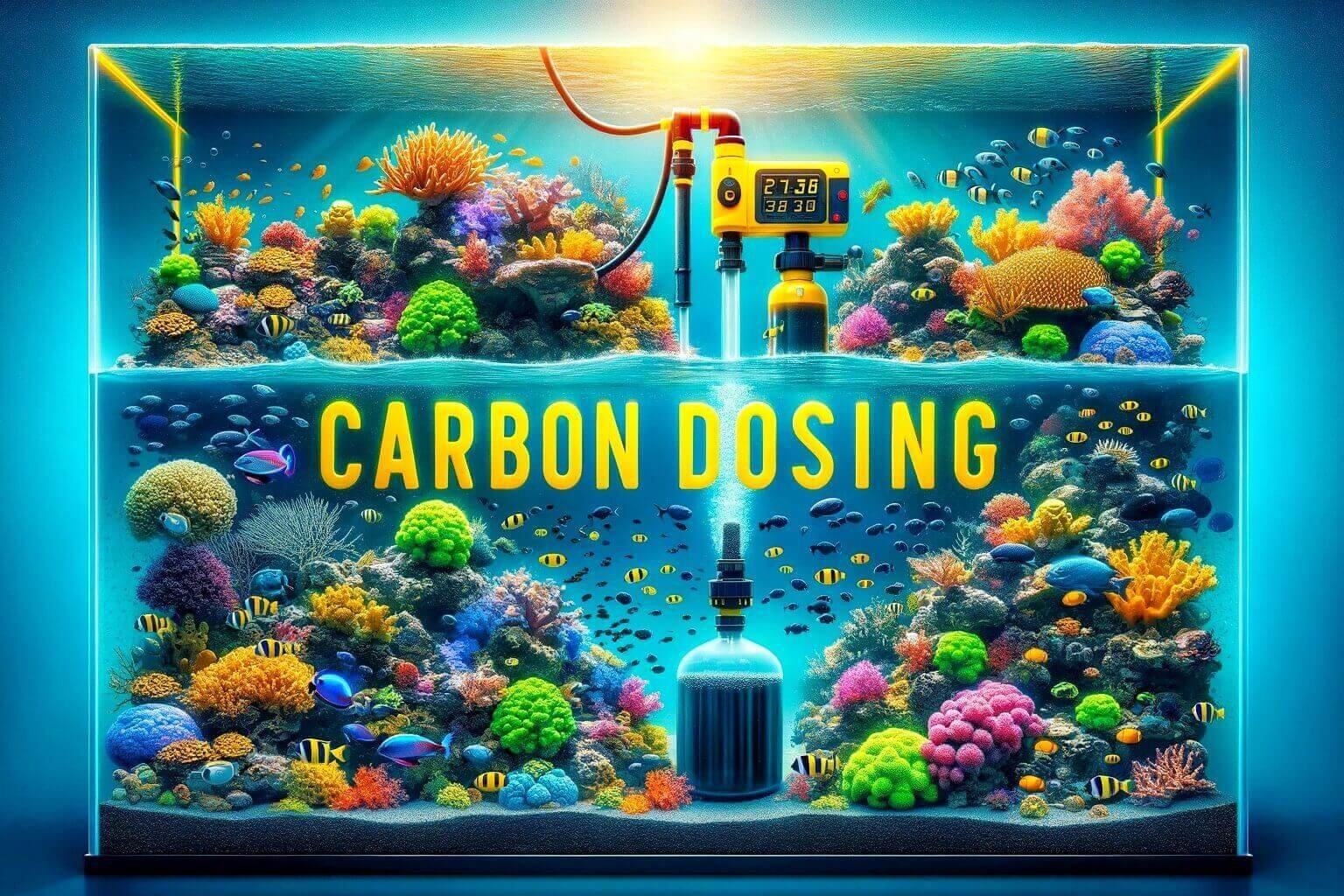What is Carbon Dosing In a Saltwater Aquarium?
Carbon dosing in the context of reef aquariums is a method used to reduce nutrients, specifically nitrate (NO3) and phosphate (PO4), in the water to promote a healthier environment for coral and marine life. It works by adding a carbon source to the aquarium, which feeds beneficial bacteria. These bacteria consume the carbon along with nitrates and phosphates, multiply, and are then removed from the system through skimming, filtration, or naturally dying off. This process helps maintain cleaner water and reduces the nutrients that can fuel undesirable algae growth.
Understanding Carbon Dosing A Reef Tank
The principle behind carbon dosing is relatively simple: it leverages the natural process of biological filtration by providing food (in the form of carbon) for beneficial bacteria. These bacteria are essential for the nitrogen cycle, converting harmful nitrogen compounds into less harmful substances.
Types of Carbon Sources
Several carbon sources are commonly used for dosing, including:
• Vodka: Simple and inexpensive, vodka dosing introduces ethanol as the carbon source. It’s a popular method among hobbyists due to its accessibility.
• Vinegar: Acetic acid in vinegar serves as another accessible carbon source, although it may require higher dosing volumes compared to vodka.
• Sugar: Though less common, sugar can also be used as a carbon source. It’s important to dose carefully, as it can more easily lead to overfeeding.
• Commercial Carbon Dosing Products: Many reef enthusiasts opt for specially formulated carbon dosing solutions available in the market. These products often provide a balanced blend of carbon sources for optimal bacterial growth.
Benefits of Carbon Dosing
• Reduction in Nutrients: By lowering nitrate and phosphate levels, carbon dosing helps prevent algae outbreaks and promotes healthier coral growth.
• Improved Water Quality: As bacteria consume organic waste, the overall quality of the aquarium water improves, contributing to clearer water.
• Enhanced Coral Colouration: Lower nutrient levels can lead to more vibrant coloration in corals, as they rely more on their symbiotic algae (zooxanthellae) for nutrients.
Implementing Carbon Dosing
1. Start Slowly: Begin with a conservative dose and gradually increase until desired nutrient levels are achieved. Monitoring is key to avoid overdosing.
2. Monitor Water Parameters: Regular testing of nitrate, phosphate, and other critical water parameters is essential to guide dosing adjustments.
3. Use a Skimmer: A protein skimmer is highly recommended when carbon dosing, as it helps remove the increased bacterial biomass from the water.
4. Be Patient: It can take several weeks to see significant changes in nutrient levels, so patience and consistent monitoring are crucial.
Precautions Of Carbon Dosing
While carbon dosing is beneficial, it’s not without its risks. Overdosing can lead to bacterial blooms that deplete oxygen levels, posing a risk to tank inhabitants. It’s also possible for certain types of bacteria to dominate, which might not be the most beneficial for the tank’s ecosystem.
Conclusion
Carbon dosing is a powerful tool in the reef keeper’s arsenal for managing nutrient levels and promoting a healthy aquarium environment. By understanding the process, choosing the right carbon source, and carefully monitoring its effects, aquarists can successfully harness the benefits of carbon dosing for their reef tanks. Remember, each aquarium is unique, and what works for one may not work for another, so personal observation and adjustment are key to success.








